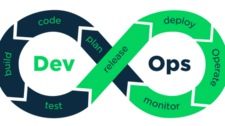Why Zero Trust Needs To Cover More Than The Network
Source:- forbes.com There is a new software development paradigm, and it’s called cloud-native, the recently emerged way to develop applications leveraging containers and microservice architectures, among others. Before you waive cloud-native as just the latest from cloud-born companies like Amazon and Google, consider this: 92% of companies anticipate going cloud-native by 2021 . Cloud-native enables software development to move at breakneck speed, as evidenced by Amazon, which is documented to release new code every 11.7 seconds; Etsy, which releases to
Read more










